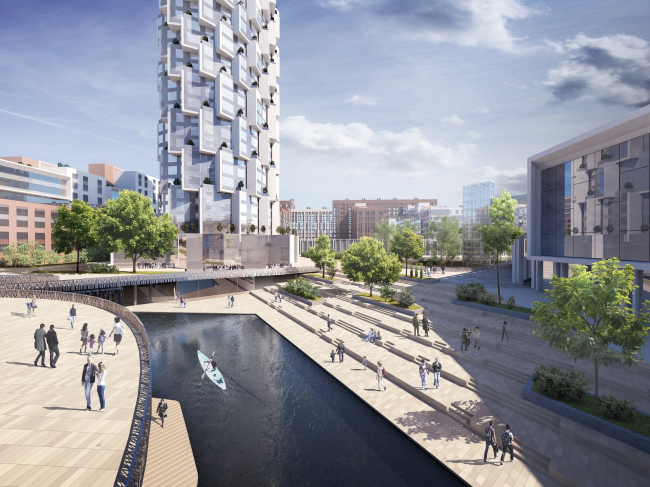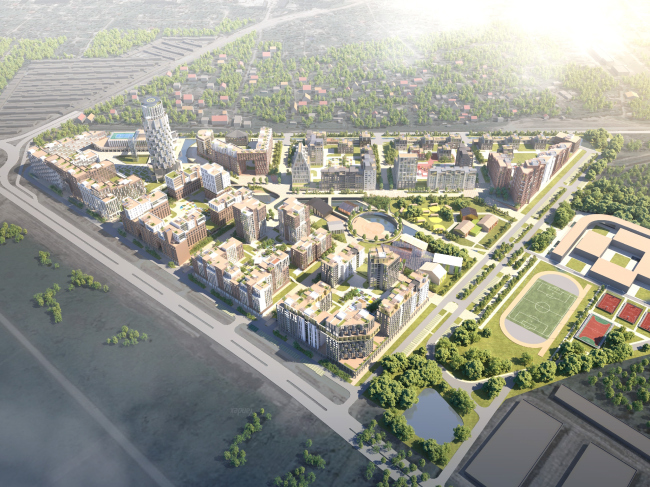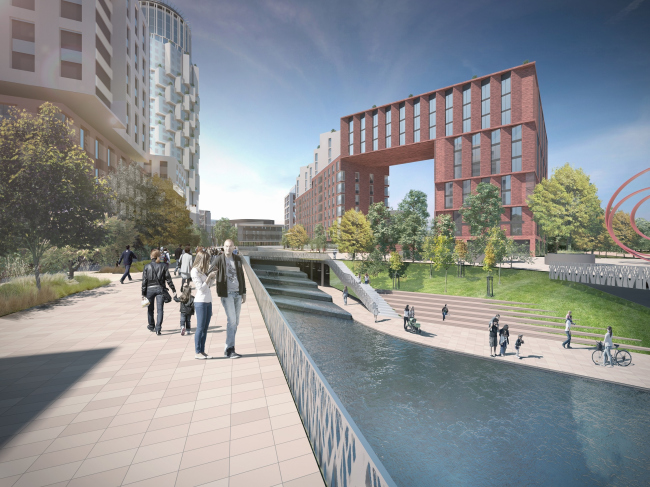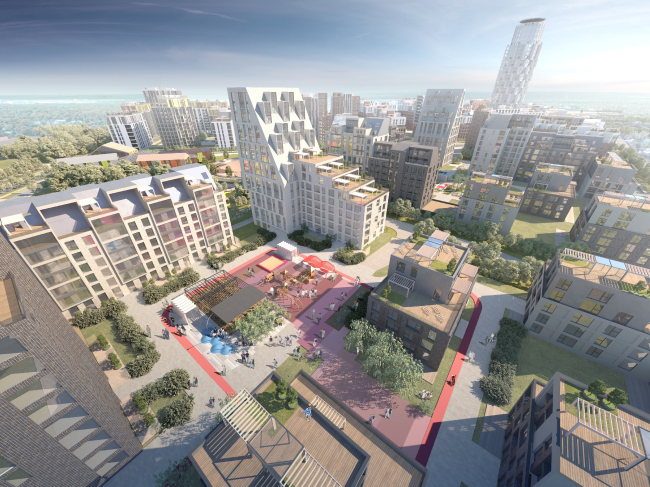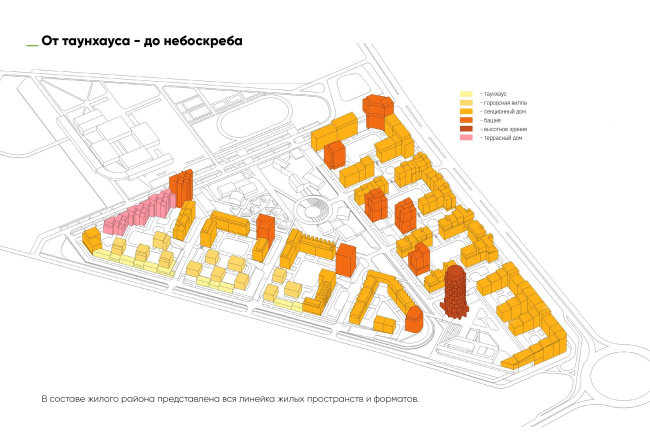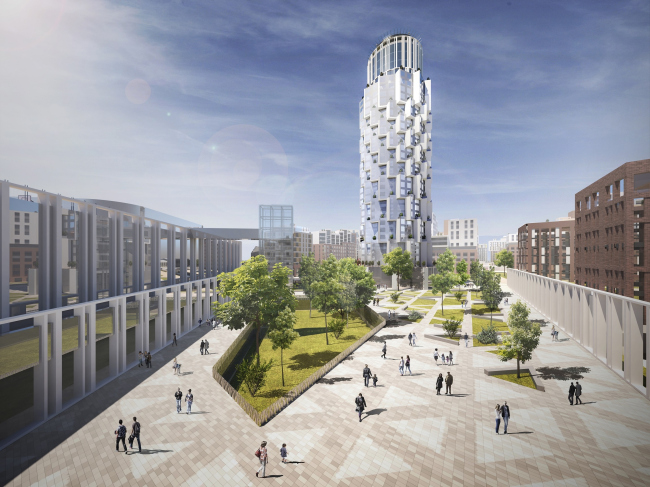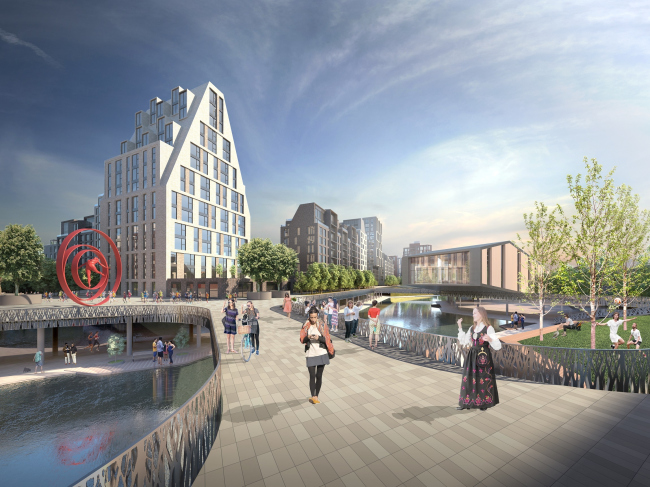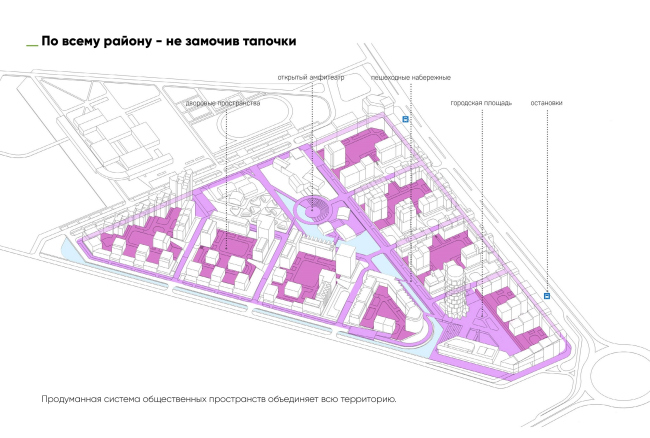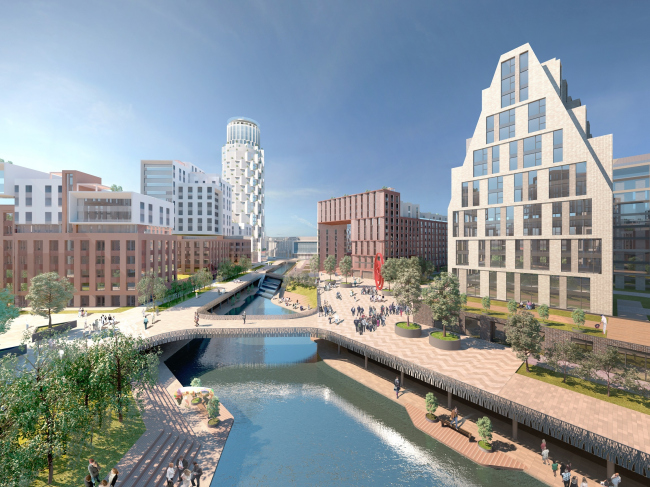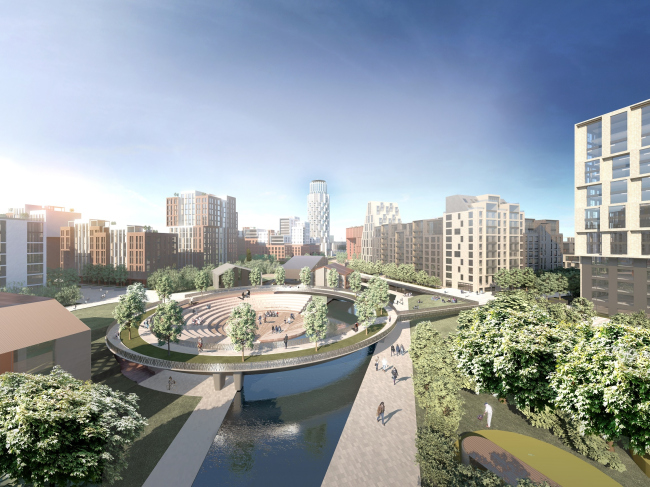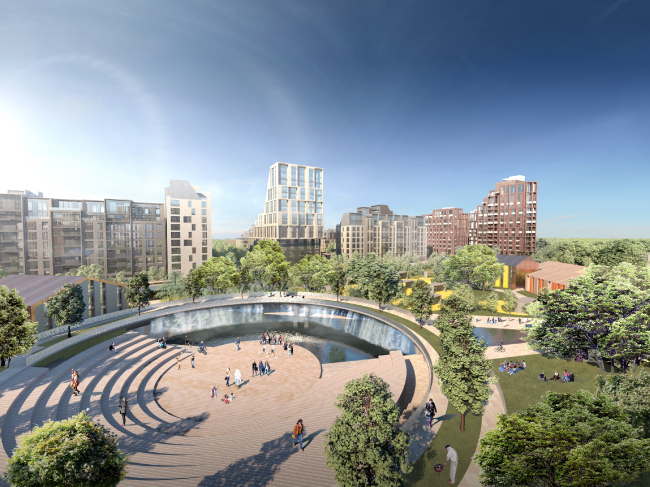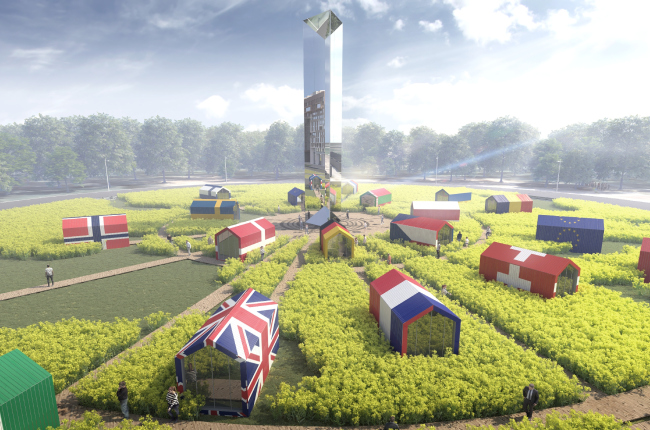|
Published on Archi.ru (https://archi.ru) |
|
| 08.04.2019 | |
|
Going West |
|
|
Elena Petukhova |
|
| Architect: | |
| Andrey Asadov | |
| Alexander Asadov | |
| Studio: | |
| ASADOV architects | |
|
For the project of a large urban area in Kaliningrad, Asadov architects proposed a few original solutions that change one’s idea of modern housing construction and comfortable city environment. The company “AvangardInvestProekt” invited Asadov architects to work upon a fundamentally new and experimental format of housing construction. What the architects got to work with was a territory of about 20 hectares in the east of Kaliningrad. A triangular land site thrusts one of its sharp corners into the East Road Junction. “Russian Europe”. Eco-area in KaliningradCopyright: © ASADOV architectsInitially, the developer thought out the marketing strategy, giving the future complex the name of “Russian Europe”, and then he organized among the Kaliningrad architects a competition for the best design of the future residential area. However, the organizers were not happy with the proposals submitted by the contestants. In search of brighter ideas, the developer visited a few architecture and construction trade shows, at one of which he for the first time met Asadov architects, which at that moment was summing up the results of their long-standing experience of implementing integrated land development projects, turning it into a manifesto of comfortable urban environment with housing that comes at a budget-friendly price. These fundamentals served as the basis for the project called “Non-sleeping Belt” that brought Asadov a victory in the Moscow contest for renovation projects. The similarity between the architects’ and developers’ vision became the starting point for their collaboration. The team of architects embarked upon a survey trip to Belgium and Netherlands. Then they transformed their impressions into an architectural and town planning format that combined European quality and Russian soul. 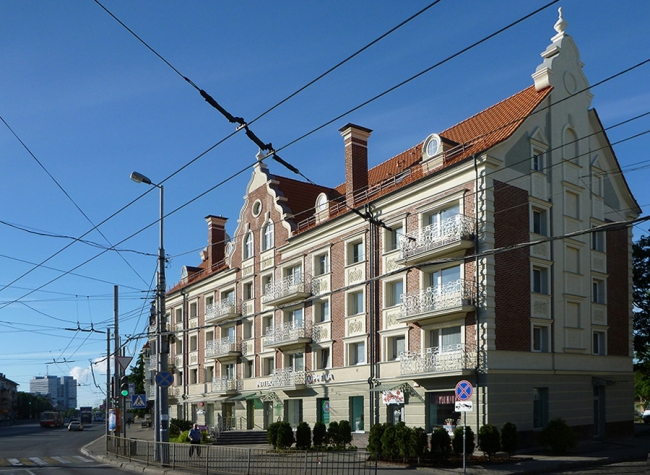 Reconstructed 5-story house in Kaliningrad. Architect: Artur SarnitsCopyright: © imperative.eu Tsvetnoi Bulvar Housing ComplexCopyright: © architect Ilia Solovyev“Russian Europe”. Eco-area in KaliningradCopyright: © ASADOV architectsThe Moscow architects proposed a concept of a full-fledged urban residential area, in which different types of housing would be combined with a highly developed business, recreational, and social infrastructure. The entire construction is clearly structured: as one gets further away from the border with the sector of private residences that joins the land site from the south side, the character of the housing construction also changed from villas and townhouses to multi-block, terraced and multi-section buildings. Closer to the north side of the land site, the density and the height of the buildings also increase. The area’s tallest building – a 100-meter tower with apartments and studios – flanks the central square – a typical construction element to be seen in many European cities that sprouts a few pedestrian boulevards. Next to the East Junction, there are four city blocks that consist of sections of varying height and façade design. They form the face of the area with broad driveways designed as entrance portals. The housing blocks that stretch along the south and northeast borders of the site are divided by a “green beam” with a large recreation zone and a few cultural and educational buildings. There is a cultural center standing next to a circular amphitheater, while closer to the northwest border the architects placed a kindergarten and a private school. There is yet another large municipal school on the neighboring site. “Russian Europe”. Eco-area in KaliningradCopyright: © ASADOV architects“Russian Europe”. Eco-area in KaliningradCopyright: © ASADOV architects“Russian Europe”. Eco-area in KaliningradCopyright: © ASADOV architectsThe distinctive feature of the concept is a large number of public territories, different in their format and function, and a system of separating the automotive and pedestrian traffic within the neighborhood. Adhering to the principle of vehicle-free yards, the architects relocated some of the driveways and all of the parking lots into a two-level stylobate. The outside perimeter of the stylobate houses public and commercial premises designed to accommodate for small to mid-size business. For the in-block communication, three levels are used: underground, overland, and the top level of the stylobate. The second and third are chiefly pedestrian ones. Interestingly, the last one is designed as a system of roofed galleries, which makes it possible to ensure maximum comfort for the residents. The architects proudly say that you can actually “walk around the neighborhood in your slippers without ever getting your feet wet”. But then again, the team of Asadov architects proposed yet another unconventional recreational bonus – a system of water channels that utilizes the close ground water and the drainage system. The channels come with pedestrian embankments on two levels. “Russian Europe”. Eco-area in KaliningradCopyright: © ASADOV architects“Russian Europe”. Eco-area in KaliningradCopyright: © ASADOV architects“Russian Europe”. Eco-area in KaliningradCopyright: © ASADOV architectsThe final chord of the system of public territories became a large square in the center of the “green wedge”. Using all the three levels of landscaping, the architects created in its middle a multifunctional space with a circular amphitheater and a bridge rubbing along its perimeter. There is a waterfall flowing down from under the bridge, which at night turns into a screen of an open-air movie theater. The bridge itself is just as sophisticated as everything that surrounds it. It plays the part of “Semiramis hanging gardens” and at the same time is a symbolic “European embassy”: there will be twelve trees planted on the bridge, as many as there are stars on the flag of the European Union. “Russian Europe”. Eco-area in KaliningradCopyright: © ASADOV architects“Russian Europe”. Eco-area in KaliningradCopyright: © ASADOV architects“Russian Europe”. Eco-area in KaliningradCopyright: © ASADOV architectsIn addition to the concept itself, the Asadov team, together with the developer, presented a mathematical proof that this location is in fact the geographic center of Europe. Calculating the middle between the extreme points of the European continent, they came to a conclusion that the center of the European oecumene is in fact the roundabout on the East Junction. For this roundabout, Asadov architects came up with an installation: the mown-out outlines of the map of Europe with miniature houses standing for the capitals of the European countries. In the center of this Mini-Europe, the authors proposed to install a vertical “periscope” stela that will make it possible to see the neighboring construction site from a birds-eye view. The probability that everything will be built exactly the way it was designed is pretty low but this example still vividly shows that this architectural team allows of no compromise. “Russian Europe”. Eco-area in KaliningradCopyright: © ASADOV architects“Russian Europe”. Eco-area in KaliningradCopyright: © ASADOV architects“Russian Europe”. Eco-area in KaliningradCopyright: © ASADOV architects“Russian Europe”. Eco-area in KaliningradCopyright: © ASADOV architects |
|
